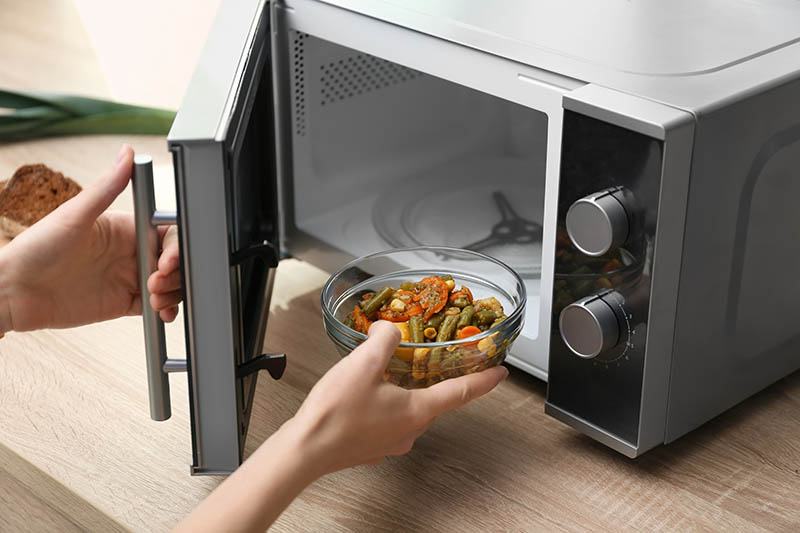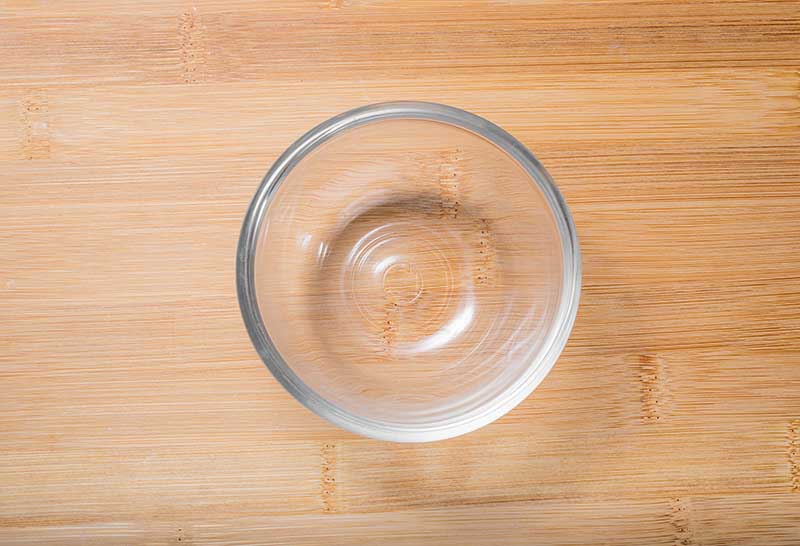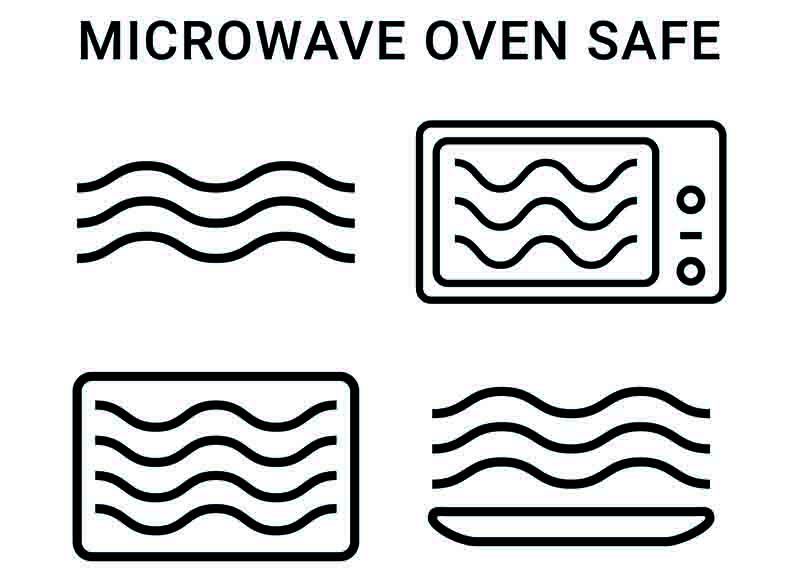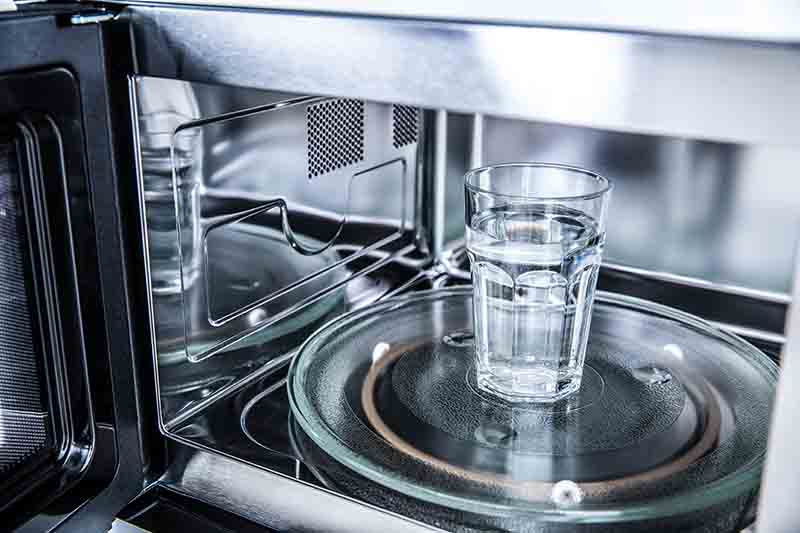Can You Microwave Glass? Risks & Expert Safety Tips
-
Pete Ortiz
- Last updated:

As a species, human beings are ingenious in nature. And it’s this ingenuity that has enabled them to come up with technology that can produce glass in large quantities. It’s virtually impossible to not find glass in every single home, given its versatility. The most common application for glass is tableware.
Many people find glass aesthetically pleasing. That’s why our cups, bowls, and even plates are made of glass. But are glasses and microwaves compatible? Can you microwave glass?
Well, the short answer is, yes and no. Because it’s all contingent on whether there are trapped air bubbles in the glass material. But before we get into all that, let’s first look at…
The Composition Of Glass
Glass is popular as a transparent, fragile, solid-like material. However, what many people don’t know is that it’s largely composed of alkali and sand. These two materials are often fused together at very high temperatures, before being cooled rapidly. It’s at the cooling stage of the process that we normally get a rigid structure that’s not crystalline or regular.
Glasses are dissimilar in the sense that they are usually produced under varying cooling rates and are made up of different ingredients. Sand and alkali are the chief ingredients in all of them, but there are also other elements such as barium oxide, fluorine, cerium, alumina, and even coloring agents. Our producers always feel the need to add these ingredients during production, to give their products adequate properties for certain applications.
For example, by adding alumina, you’ll be ensuring that your final product remains viscous at lower temperature ranges, in addition to exhibiting an improved chemical resistance. Cerium, on the other hand, makes glass an infrared absorbent, while fluorine gives it an opaque/cloudy impression.

Common Types of Glass
There are three common types of glass currently being sold on the market. The most common one is soda-lime glass, also known as commercial glass. As you might have guessed, it’s made of lime, soda, and of course, silica (sand). Some soda-lime glass has coloring agents, while others don’t.
Your bowls, cups, and plates are all soda-lime glass, as it’s not susceptible to chemical attacks typically caused by aqueous solutions. Sadly though, most of them exhibit a very low tolerance to thermal changes, hence the reason why you constantly hear people lament about how their favorite cups cracked or broke while making hot tea.
The other two common types are lead and borosilicate glass. Lead’s special ingredient is lead oxide, while that of borosilicate is boric oxide. If you’d like to shield yourself against gamma or any other dangerous form of radiation, you’ll need lead glass. But if you’re looking for glass that offers the best resistance against chemical corrosion or thermal variations, borosilicate is the answer.
Microwave-Safe Glass
Our million-dollar question at this point is, “What makes glass microwave-safe?” And no, it has nothing to do with the composition, but the air bubbles trapped in it. During production, small bubbles of air can easily be trapped in the product. Some manufacturers are careful not to let that happen, but due to time and cost constraints, others don’t care.
Like most things, air expands in the presence of heat. Therefore, when you microwave glass that has trapped air in it, that hollow space automatically starts expanding, thus forcing your glass to shatter into pieces.
How to Safely Microwave Glass
1. Examine the Glass
Don’t be that trigger-happy guy who’s more excited about the thrill of pressing the power button, forgetting about the blast that accompanies it. The responsible thing to do, even before you put food in your glassware, is to thoroughly inspect it.
We have producers who always remember to tag their products as “microwave safe” using symbols. The symbol will be a tiny image of a microwave, with squiggly lines. It’s a sign that your glassware has already been tested and found to be microwave safe.
Some products have the microwave image replaced by a dish set with radiation waves drawn below it. The squiggly lines will also be present, to confirm they are microwave safe. But to avoid confusion, we have manufacturers who’ll avoid using symbols and add “Not Microwave Safe” in the description.
In the event you don’t find such information or any symbol after checking numerous times, try to find out if the brand produces microwave-safe glasses. Don’t make any assumptions, as the consequences could be dire.

2. Conduct the Microwave Testing
Let’s assume for a quick second that you’ve tried looking for any sort of information that could put your mind at ease, but nothing’s forthcoming. You’ll have to take that leap of faith and test it by yourself.
However, for that to happen, you’ll need what we like to call a “control sample” — i.e., a plate, cup, mug, or bowl that’s microwave-safe.
Needless to say, you have to be 100% positive that it’s microwave-safe. If it doesn’t have the symbol/logo imprinted at the bottom, or if the words aren’t written in the description, keep looking for an approved microwave-safe utensil that’s similar to the one you’re testing. Once you’ve found it, fill both of them with water, three-quarters of the way.
3. Microwave the Glasses
In this experiment, we’ll be using two cups made of glass — the “control sample” and the “specimen”. But before placing them inside the unit, we first have to heat up the microwave.
How high the temperatures are will depend on the type of microwave you’re using. If you don’t know how to regulate the temperature, get the manual. You’ll find all the instructions you need in there.
When it’s ready, place both cups inside, side by side. You’re also allowed to put one on top of the other if the microwave’s space is inadequate. The timer should be set to 1 minute max.

4. Check the Specimen & Control Sample
You’ll know it’s time to find out whether your glassware is microwave-safe when you hear that microwave beep. Grab your oven mitts, as you’ll also need them to protect your hands from inadvertent burns.
Once you’ve removed both cups from the microwave, place them on the kitchen counter or table, and use your hands to check the temperature of the water. In the case of the control sample, the water will be warm, but the cup will be cold, meaning most of the radiant energy generated by the microwave was absorbed by the water and not the cup. And that’s good news because that’s how it’s supposed to be.
If you touch the water in the specimen and find that it’s cold, check the cup. If it feels warm or hot, that could only mean one thing — it’s not microwave-safe. And had you continued to heat it up, chances are it would have shattered into tiny pieces.
5. Labeling
Now that we know the status of the glassware, it’s important to label it so that the next person doesn’t have to guess the next time they feel the urge to heat something up. Also, labeling saves a lot of time, as they won’t have to go through this process a second time.
Just look for a permanent marker and add the microwave-safe symbol at the bottom of the cup. Make sure it’s clear to anyone and everyone.

Frequently Asked Questions (FAQ)
Can You Microwave Glass with Frozen Food?
The glass will be fine if it’s microwave-safe, but the responsible thing to do is to first let the food thaw. By the way, don’t forget to wipe the condensation that’s usually found on the glass container’s surface, before placing it inside a microwave.
Can You Microwave a Mason Jar?
This will depend on when the mason jar was produced. Back in the day, when microwaves were not a common household item, manufacturers produced mason jars that were not microwave-safe. So, if it doesn’t have the symbol, you shouldn’t roll the dice. Look for a different container to heat up your food.
Conclusion
There’s no denying that glass is an extraordinary material. Its chemically inert nature and the fact that it doesn’t melt when exposed to extreme heat is the reason why we can now safely cook food in our microwave oven.
So, the short answer is yes, you can microwave glass, as long as it’s microwave safe. Just make sure you don’t forget to first check the symbols inscribed on it, as some glasses have trapped air bubbles in them, and not all of them are microwave safe.
See also:
- Are Tervis Tumblers Microwave Safe? (Microwave Safety Tips)
- Can You Microwave Melamine? (Microwave Safety Tips)
- Can You Microwave Solo Cups? (Microwave Safety Tips)
Featured Image Credit: New Africa, Shutterstock
Contents


